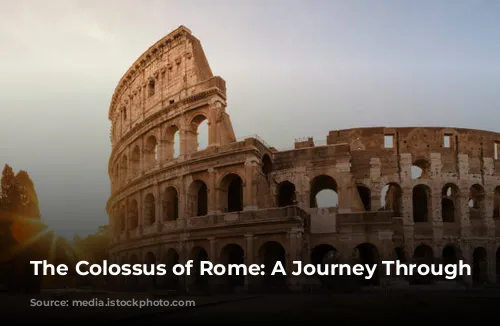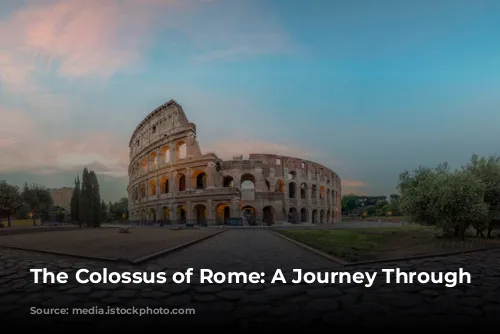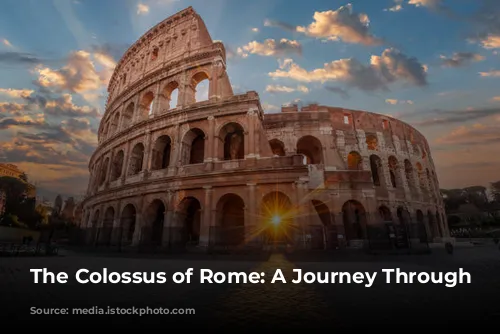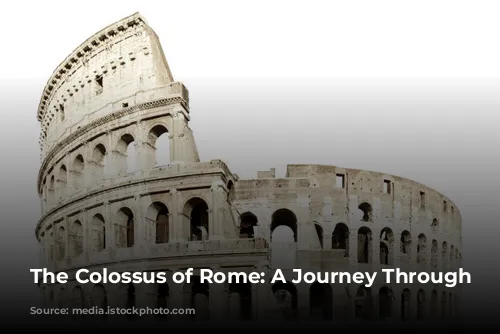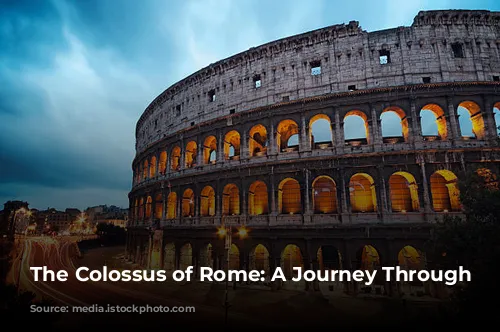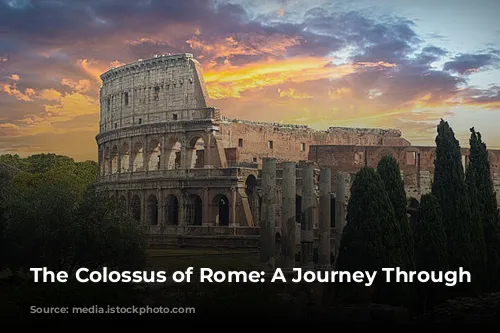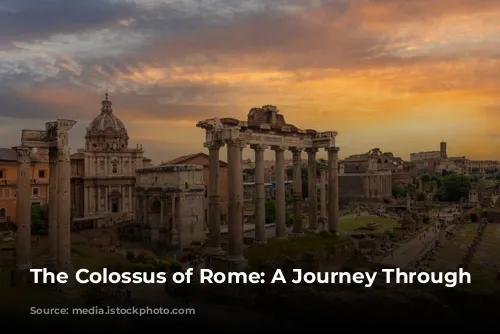The Colosseum, a name synonymous with ancient Rome, stands as a testament to the empire’s power and grandeur. This imposing structure, also known as the Flavian Amphitheatre, is the largest and most impressive amphitheatre in the Roman world. Emperor Vespasian, of the Flavia family, initiated its construction, and his son, Titus, inaugurated it with a spectacular opening ceremony in 80 A.D.
This incredible event, spanning one hundred days, showcased gladiatorial combat, animal hunts, and even mock naval battles called naumachia. The arena, filled with water, brought the thrill of ancient sea battles to life.
The Name Behind the Legend
But how did the Colosseum earn its iconic name? The story goes back to a famous prophecy by the Venerable Bede, a medieval monk. Bede predicted, “Rome will exist as long as the Colosseum does; when the Colosseum falls so will Rome; when Rome falls so will the world.” This prophecy may have drawn inspiration from the colossal statue of Emperor Nero, known as “the Colossus”, which stood 35 meters tall near the amphitheatre. Sadly, the statue is no more, but its legacy lives on in the name we use today.
An Architectural Masterpiece
The Colosseum stands as a marvel of Roman architecture, boasting an elliptical shape designed to accommodate a vast audience. The structure, once covered in gleaming white travertine stone, featured four floors, each with eighty arches. The second and third floors were adorned with magnificent statues, adding to the grandeur of this architectural masterpiece.
Construction: A Feat of Engineering
Imagine building such a monumental structure in less than ten years! The Romans were masters of the arch, a technique that allowed them to distribute weight efficiently, creating structures that could withstand the test of time. This innovative architectural approach is evident in other Roman marvels like the aqueducts.
The Colosseum resembles a series of aqueducts stacked one upon the other, a testament to the Romans’ ingenuity and skill.
From Glory to Ruin
Today, we only see the skeleton of the Colosseum. Time, neglect, and even exploitation have taken their toll. In the Middle Ages, when the Colosseum fell into disuse, it was transformed into a quarry for building materials. Marble, lead, and iron were extracted from its walls to construct palaces and even St. Peter’s Basilica. Even today, we can see holes in the columns, remnants of the extraction process.
A Theatre of Spectacle
The Colosseum could accommodate up to seventy thousand spectators, offering a breathtaking view of the arena from every seat. Entry was free for all Roman citizens, but seating was strictly divided according to social status, just like in modern theatres. The commoners occupied the upper tiers, while senators, priests, and the emperor held the most prestigious seats near the arena.
This grand stadium even featured a velarium, an ingenious roof system made of linen tarpaulin, which protected spectators from the sun. This complex system required the synchronized efforts of one hundred sailors from the Imperial fleet to maneuver.
The World of Gladiators
The Colosseum, a stage for both symbolic and physical events, offered Romans a thrilling glimpse into the world of gladiatorial combat. The arena floor, once a mixture of brick and wood, has vanished, revealing the underground cellars where equipment was stored and prepared for the games.
These cellars held lifts and hoists, powered by counterweights, which transported gladiators and animals into the arena through hidden trapdoors, surprising the audience with dramatic entrances.
The shows in the Colosseum were a captivating mix of spectacle and brutality. In the morning, audiences witnessed venationes, thrilling hunts involving exotic animals or fierce battles between men and animals.
Some events even featured public executions, leaving condemned individuals to the mercy of ferocious beasts. The silvae, recreated forest scenes featuring animals that were not always killed, provided a less cruel spectacle.
The Gladiators’ Story
The crowd’s favorite event, however, was the gladiatorial combat. After a break to clean the arena and prepare for the main event, the gladiators entered the Colosseum to thunderous applause. They marched from their barracks, known as the Ludus Magnus, into the arena, greeted by their adoring fans like heroes.
The gladiators, often prisoners of war or impoverished individuals seeking fame and wealth, belonged to different categories based on their weapons and fighting styles. The retiarius, armed with a net, trident, and knife, clashed with heavily armored gladiators, creating a thrilling spectacle.
During a fight, a wounded gladiator could appeal for mercy by raising his arm. The audience would then plead with the emperor, seated on his stage, to spare the fallen gladiator or deliver the final blow. A raised thumb signified mercy, while a lowered thumb meant death.
The winners received golden palm leaves and generous sums of money. After each battle, servants, dressed as Charon, the Ferryman of the Underworld, made sure the wounded were truly dead, sometimes ending their suffering. Roman spectators, fascinated by the brutality of these events, considered gladiator’s blood to have healing powers.
A Legacy of Violence and Worship
The Colosseum, a monument to Roman power, eventually fell into disuse as the empire declined. It served as a shelter for various groups, including hermits, and even housed a cemetery.
In the 16th century, it faced demolition, but Pope Benedict XIV intervened, declaring it a sacred monument dedicated to the Passion of Christ. He placed a cross on a pedestal, symbolizing the suffering of Christian martyrs. This cross marks the starting point for the Stations of the Cross on Good Friday, making the Colosseum a symbol of both pagan grandeur and Christian devotion.
The Colosseum, a testament to Roman history and a symbol of enduring power, continues to draw millions of visitors from around the world. It stands as a reminder of the past, a ghost of old Rome, forever etched in our collective memory.
